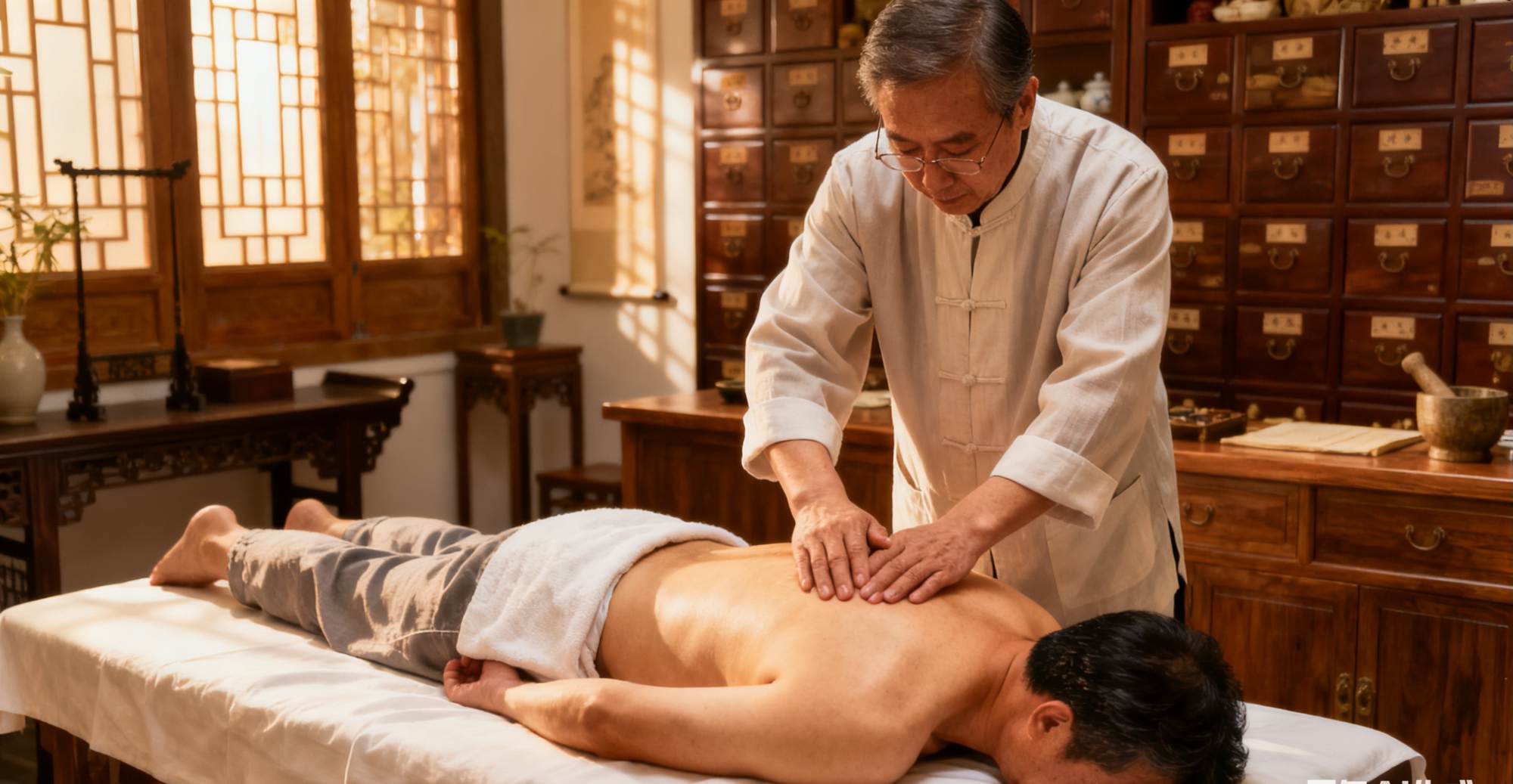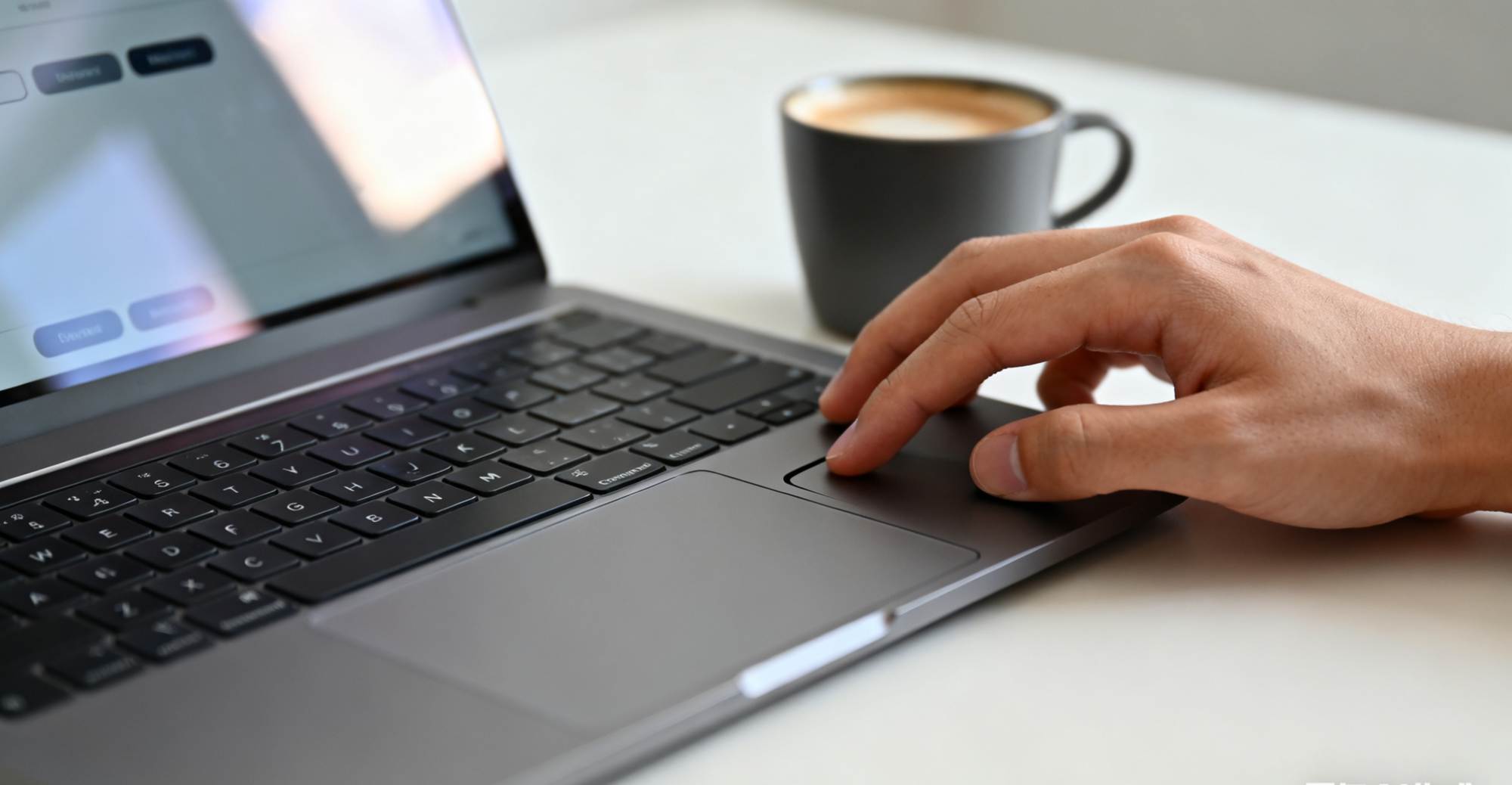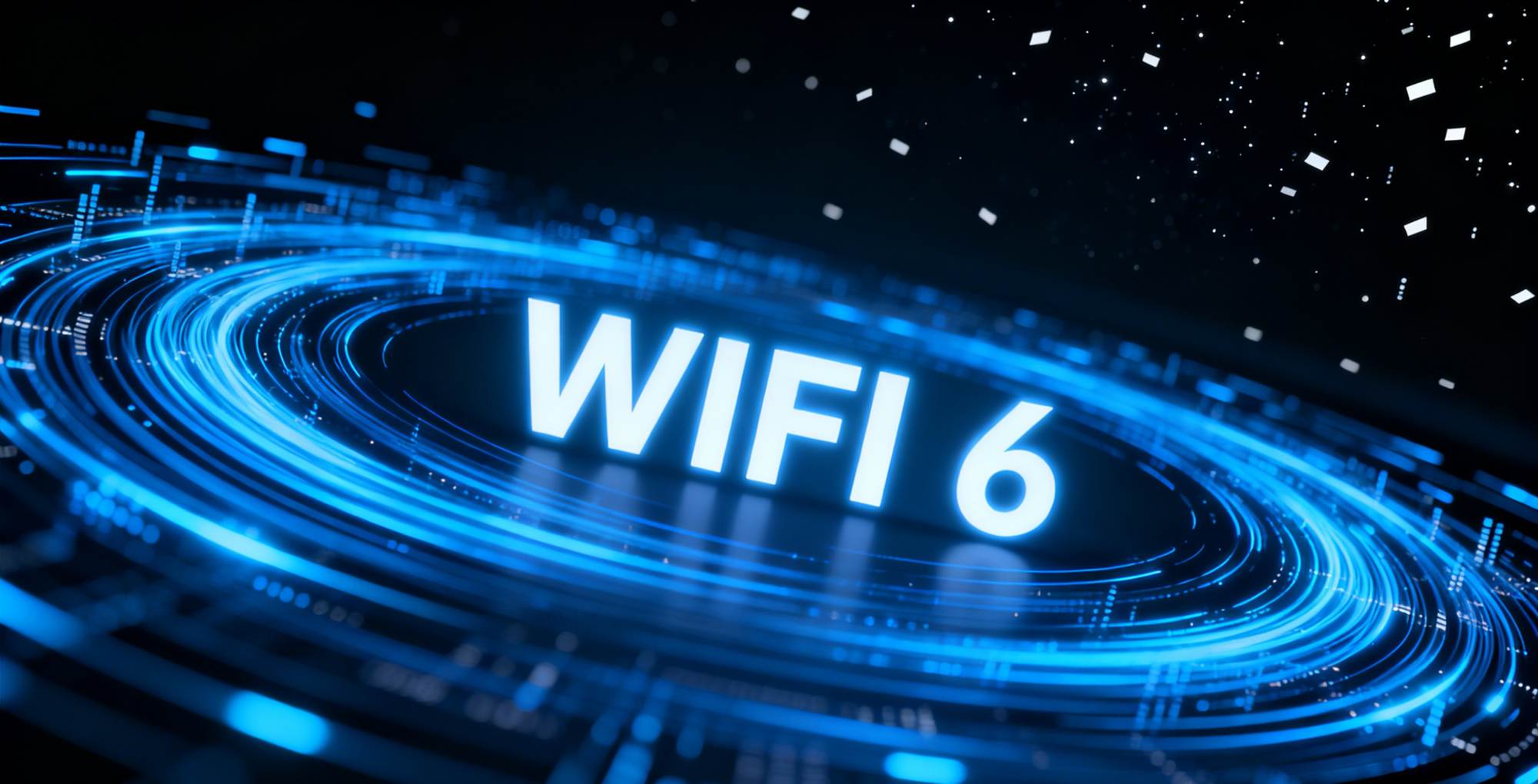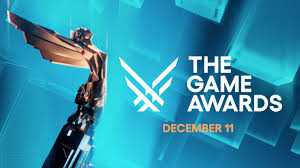Throughout the 5,000-year history of Chinese civilization, Traditional Chinese Medicine (TCM) stands as a shining pearl, embodying the ancients' profound understanding of life and health. TCM massage, a unique external treatment within TCM, has spread from ancient imperial court physiotherapy to the general public due to its simplicity, safety, and effectiveness. Today, Americans are increasingly seeking natural, non-drug-based health remedies. TCM therapeutic massage—this ancient healing art—is finding modern relevance in Western families. This guide will help you understand this traditional practice and safely incorporate its benefits into your family's well-being.
content
3.1.Holistic Conditioning and Balancing Yin and Yang
3.2. Unblocking the Meridians and Boosting the Flow of Qi and Blood
3.3. Strengthening the Body's Health and Eliminating Evil, Strengthening the Body's Strength
Commonly Used Health-Care Acupoints and Their Effects
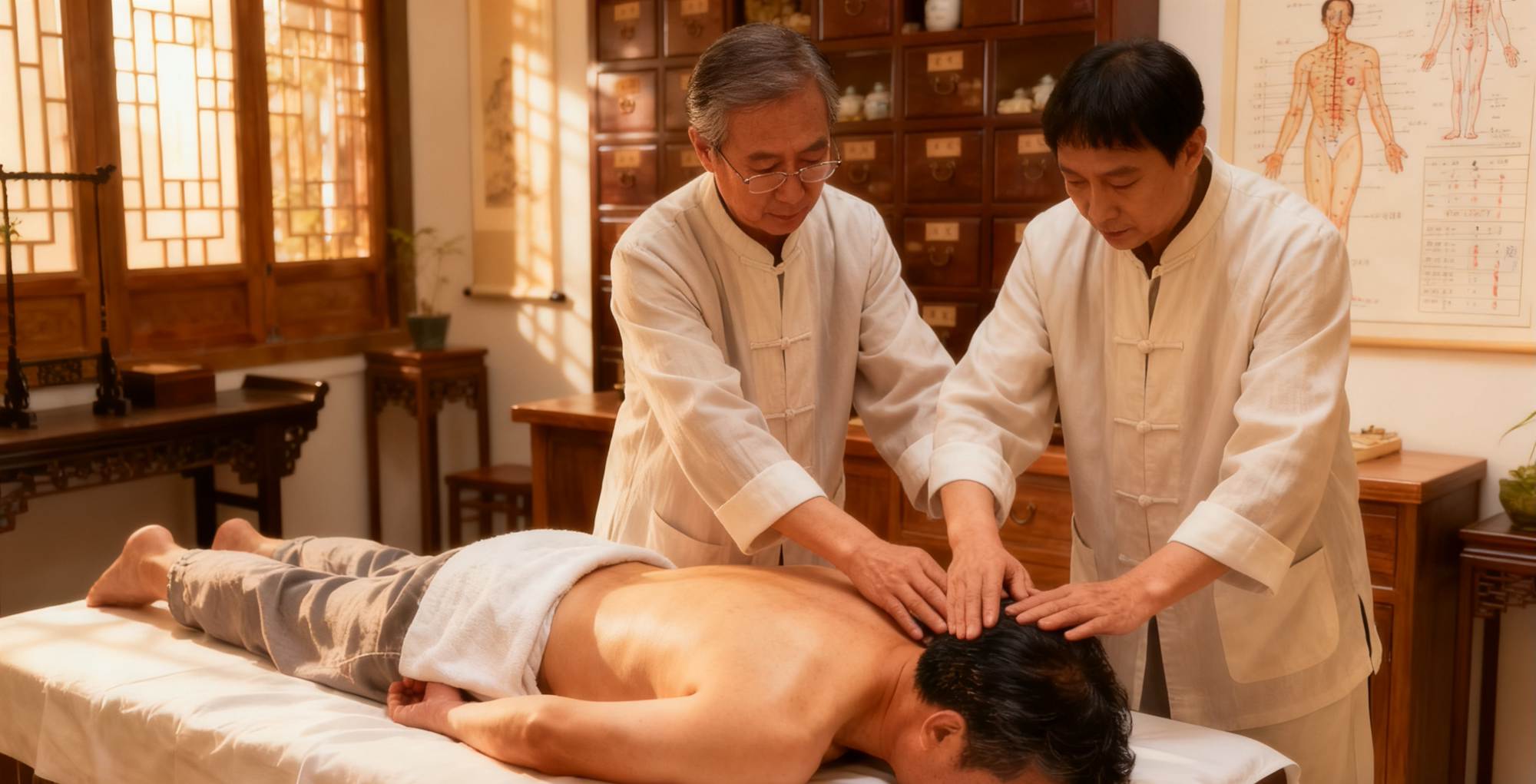
What is TCM?
Traditional Chinese Medicine (TCM) is a medical system guided by ancient Chinese philosophical thought and developed through years of clinical practice. Unlike Western medicine, which focuses on localized pathologies, TCM emphasizes a holistic approach and treatment based on syndrome differentiation, viewing the human body as an organic whole closely connected to nature and society. The internal organs, meridians, and qi and blood interact in harmony, maintaining the dynamic balance of yin and yang. Traditional Chinese Medicine (TCM) not only focuses on treating diseases but also emphasizes the concept of "prevention"—preventing illness before it occurs, preventing complications after illness occurs, and preventing recurrence after recovery. Through observation, auscultation, inquiry, and palpation, it comprehensively assesses the cause of illness and physical constitution, then formulates a personalized treatment plan. A variety of treatment methods are available, including Chinese medicine, acupuncture, massage, moxibustion, and cupping. Massage, which requires no medication or equipment, is one of the most suitable therapies for home use.
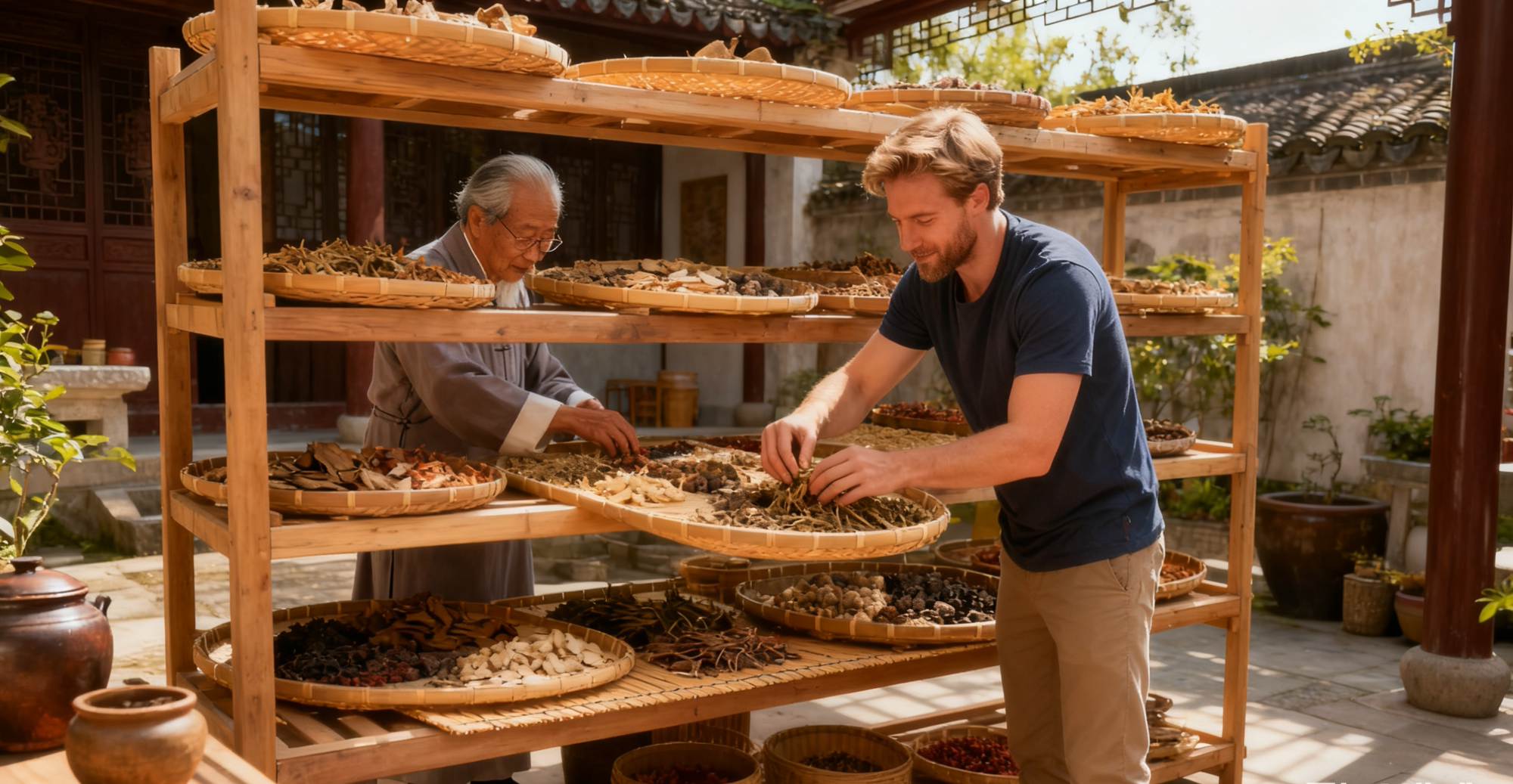
Principles of TCM Treatment
The core of TCM treatment is not to "fight" disease, but to "balance" the body's imbalances. Its theoretical foundation can be summarized into three core principles, which also underpin the effectiveness of TCM massage.
3.1.Holistic Conditioning and Balancing Yin and Yang
TCM believes that illness stems from an imbalance of yin and yang—for example, invasion of cold pathogens leading to excess yin and deficiency of yang, or internal generation of dryness and heat leading to hyperactivity of yang and deficiency of yin. Massage stimulates acupuncture points on the body's surface, stimulating meridian responses and regulating the flow of qi and blood, thereby restoring the balance of yin and yang. For example, massaging abdominal acupuncture points for those with cold-induced diarrhea can warm yang, dispel cold, and strengthen the spleen and stomach.

3.2. Unblocking the Meridians and Boosting the Flow of Qi and Blood
Meridians are a unique physiological system in Traditional Chinese Medicine (TCM). They function as the body's internal "energy network," responsible for the circulation of qi and blood and the coordination of internal organs. Blockage in these meridians can cause pain, numbness, or dysfunction. Massage, through techniques such as pushing, pressing, kneading, and kneading applied to acupuncture points, can unclog the meridians, activate blood circulation, and relieve pain. The saying, "If the meridians are unblocked, there is no pain; if the meridians are blocked, there is pain," embodies this principle.
3.3. Strengthening the Body's Health and Eliminating Evil, Strengthening the Body's Strength
TCM emphasizes the principle that "when righteous qi remains within, evil cannot prevail." Massage not only expels evil, but also stimulates the body's righteous qi, enhancing immunity and self-healing abilities, thus benefiting both disease prevention and recovery.
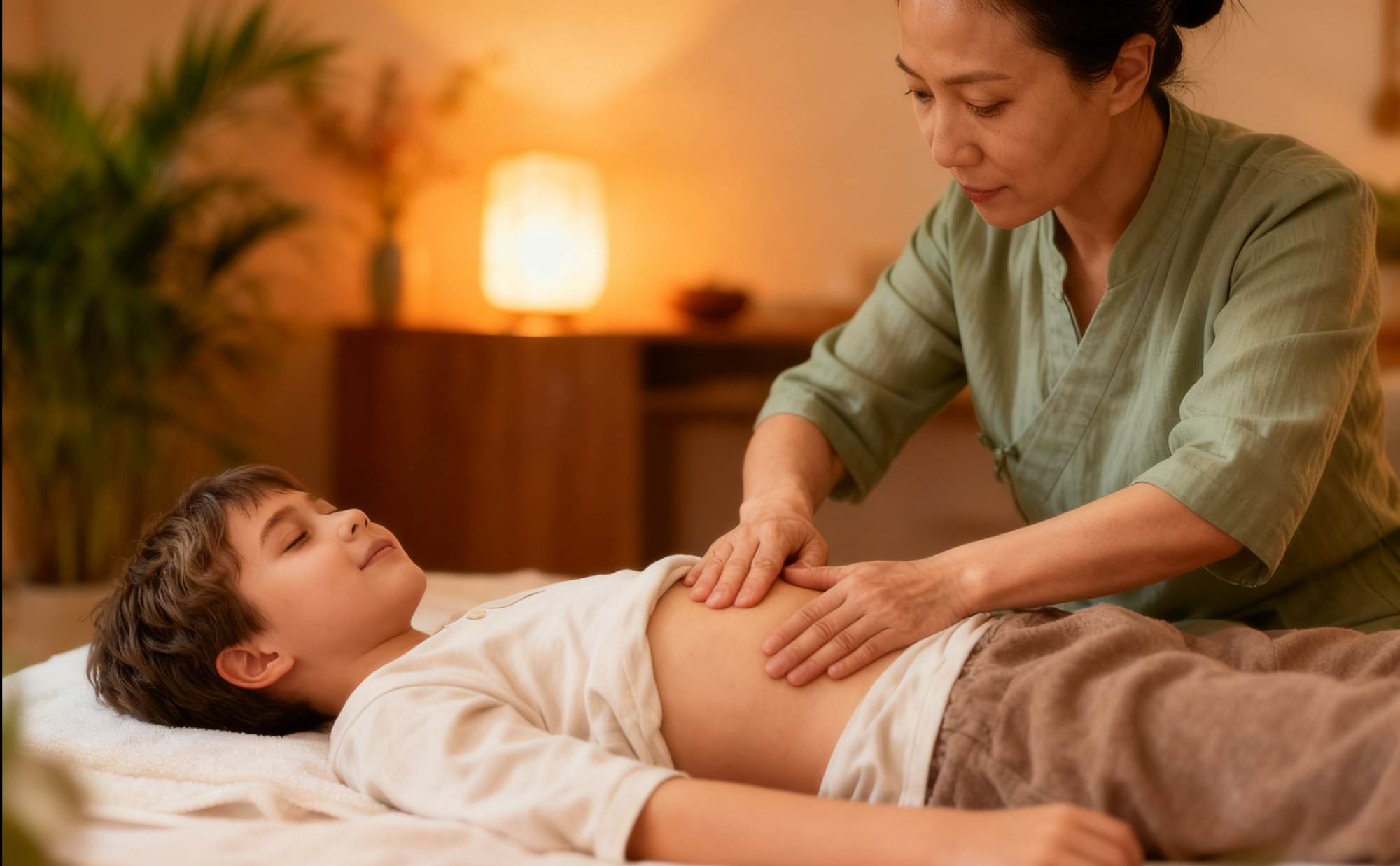
home TCM Physiotherapy
With rising health awareness, American families are increasingly turning to complementary therapies, with massage being one of the most popular. More and more people are trying TCM massage at home. No professional qualifications are required; simply mastering basic acupuncture points and simple techniques can effectively treat common problems such as neck and shoulder pain, fatigue, indigestion, and insomnia. The advantages of home massage are convenience, flexibility, and intimacy.
Massaging your family's shoulders and neck after get off work can relax muscles and relieve tension.
Gentle abdominal massage can help children with indigestion and promote digestion.
For elderly people experiencing back pain, massaging the acupuncture points on the waist can improve circulation and relieve discomfort.
However, it's important to note that home massage isn't just random pressure. Only by adhering to Traditional Chinese Medicine theory and mastering the correct techniques can you achieve safe, effective, and lasting results.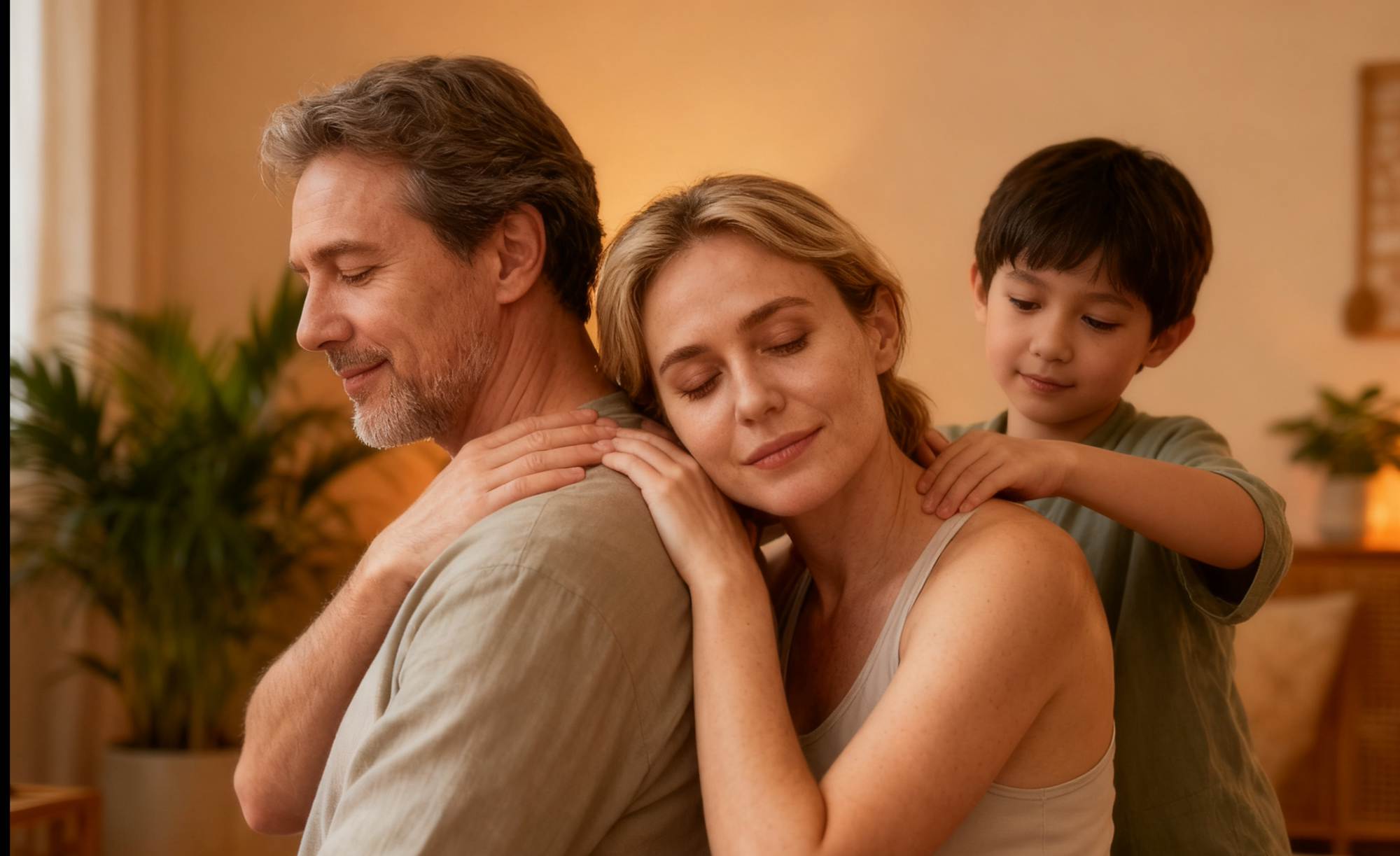
Commonly Used Health-Care Acupoints and Their Effects
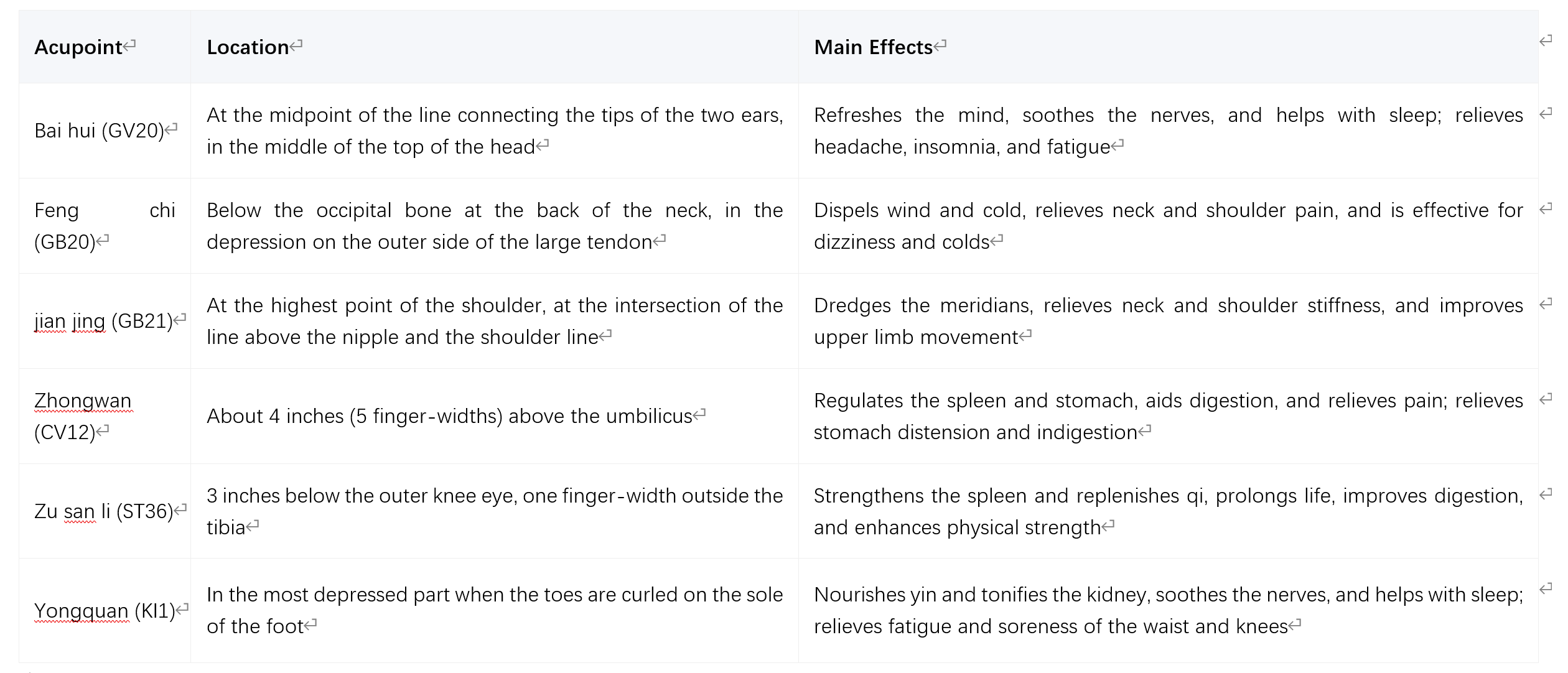
Basic Massage Techniques
1. Pressing Method: Press the acupoints vertically with the thumb or the root of the palm, slowly apply force until there is a sour and distending feeling, hold for 3-5 seconds, and then relax, repeating 5-10 times. Suitable for Baihui, Zhongwan, and Zusanli.
2. Kneading Method: Use the pulp of the thumb to make a circular kneading movement at the acupoint, at a frequency of 60-80 times per minute. Suitable for Fengchi, Jianjing, and Yongquan, which can promote blood circulation and relaxation.
3. Pushing Method: Use the root of the palm or the pulp of the thumb to push smoothly along the direction of the meridians, suitable for the back and abdomen, and can promote blood circulation and gastrointestinal peristalsis.
4. Pinching Method: Use the thumb and index finger to pinch and lift the muscles or acupoints, gently lifting and releasing, suitable for the neck, shoulders, and limbs, to relieve muscle tension and soreness.
A small amount of body oil can be used before massage to reduce friction. The force should be adjusted according to the individual - the elderly and children should be massaged gently, while young and middle-aged people can be massaged with a little more force. Each massage session should be controlled within 10-20 minutes.

Precautions
Although TCM massage is mild and safe, there are still some contraindications. Following the following points can truly achieve scientific health preservation:
1.Contraindicated Groups: Pregnant women, women during menstruation (especially in the abdomen and waist), those with skin damage or infection, those with severe cardiovascular and cerebrovascular diseases, osteoporosis, or tumors should not receive massage.
2.Avoid Inappropriate Times: Do not massage on an empty stomach or within half an hour after a meal, after strenuous exercise, or when overly fatigued.
3.Ensure Accurate Acupoint Location: You can use an acupoint map or a mobile app to assist in location. The correct acupoints are often accompanied by a slight sour and distending feeling.
4.Pay Attention to Body Reactions: If dizziness, nausea, or increased pain occurs, stop immediately. A slight sour and distending feeling is normal, but if the pain persists, seek medical attention.
5.Does Not Replace Medical Treatment: Family massage is suitable for conditioning mild discomfort. If the symptoms are obvious or persistent, seek professional medical diagnosis and treatment in a timely manner.

summary
Traditional Chinese Medicine massage is a perfect fusion of ancient wisdom and modern health concepts. Become a wellness practice every family can master.
Start with just 5-10 minutes, perhaps focusing on one or two techniques. Many American families find that incorporating a simple massage into their evening routine helps them transition to restful sleep. Others use acupressure as a quick energy boost during breaks from schoolwork or work.
The beauty of this practice lies in its flexibility and immediacy. You're not just relieving today's tensions—you're building lifelong wellness tools while connecting with one of the world's oldest, most continuously passed healing traditions.
